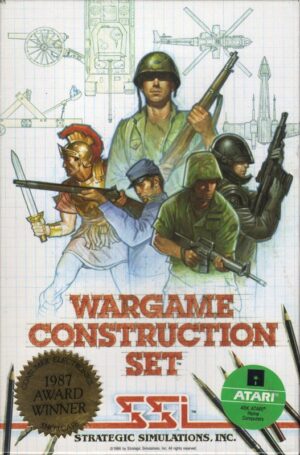Retro Replay Review
Gameplay
Magic Carpet delivers a tight, arcade-style experience that challenges players with precise timing and quick reflexes. As Aladdin soars on his enchanted carpet, you’ll need to navigate three distinct caves filled with a variety of traps. Bouncing boulders, deadly portcullises, and shifting walls force you to memorize patterns and plan your movements carefully. Every misstep sends you tumbling back to the cavern entrance, raising the stakes on each attempt.
The inclusion of vampire bats and a treacherous elevator section adds layers of unpredictability. While the carpet’s controls feel responsive and intuitive, the rapid alternation between high-speed gliding and sudden obstacle avoidance can lead to some tense moments. This balance between fluid motion and sudden danger keeps the gameplay loop engaging, compelling you to learn from each failure and refine your approach.
Reaching the third cave is only half the journey—here you face the formidable fire-breathing dragon that guards the magic lamp. Confronting this boss-like encounter tests all of your accumulated skills: you must dodge flames, time your carpet maneuvers, and seize the lamp at the perfect moment. Securing the lamp resets the adventure, offering a fresh challenge and adding a satisfying loop that encourages replayability.
Overall, Magic Carpet’s gameplay thrives on its simplicity and escalating difficulty. The game strikes a fine balance between punishing obstacles and a forgiving restart system. Each run feels meaningful, pushing you to master every element from the bouncing boulders to the dragon’s fiery breath.
Graphics
Visually, Magic Carpet embraces a colorful, storybook aesthetic that evokes classic Arabian Nights themes. The caves are richly textured with stone patterns, mossy walls, and glowing torches that cast dynamic shadows. While the game’s palette is limited by its era, the designers used bold contrasts to ensure hazards stand out crisply against the background.
Animation is surprisingly smooth for a retro title, with Aladdin’s carpet swooping in fluid arcs and the dragon’s wings flapping in a menacing rhythm. Subtle touches—like the quiver of a portcullis before it drops or the flicker of a bat’s wings—add to the atmosphere and telegraph upcoming dangers. These visual cues reward attentive players and elevate the sense of immersion.
The user interface remains unobtrusive, leaving the screen largely clear for uninterrupted exploration. Health indicators and brief pop-ups only appear when necessary, striking a good balance between information and immersion. Though modern gamers might see the graphics as dated, the game’s charm lies in its pixel-handcrafted artistry.
Every new cave introduces fresh visual motifs—icy stalactites, glowing crystals, or lava pits—ensuring the environments never feel monotonous. This variety, coupled with vibrant sprite work, keeps the game visually engaging even after multiple restarts.
Story
At its core, Magic Carpet presents a classic hero’s quest: Aladdin must retrieve a legendary lamp guarded deep within treacherous cavernous lairs. While the narrative framing is simple, it provides a solid justification for the escalating obstacles and resets. Each time you grab the lamp, the adventure renews, reinforcing the mythic cycle of challenge and reward.
There’s a charming minimalism to the storytelling. Without lengthy cutscenes, the game relies on environmental details—torches that flicker ominously, cave walls scarred by ancient claws—to convey a sense of history and danger. The dragon, though a single recurring foe, embodies the ultimate test of courage, making its fiery roars feel like a climactic payoff to your perseverance.
Though there’s no extensive dialogue or character development, Aladdin’s journey toward the lamp resonates through the gameplay itself. Each failure and restart becomes part of his legend, as if the caves themselves challenge him to prove his worth time and again. This cyclical narrative structure gives Magic Carpet a mythic quality that feels both nostalgic and timeless.
For players who appreciate lore-light adventures, the straightforward premise keeps the focus squarely on action and skill. The story may not delve into political intrigue or character arcs, but its clarity and consistency drive the game forward with a singular purpose.
Overall Experience
Magic Carpet strikes an impressive balance between challenge and accessibility. Its quick restarts mean frustration is brief, and every new attempt feels like a fresh puzzle to solve. The game’s learning curve is steep at first, but once you internalize the mechanics, it offers a satisfying sense of mastery.
Replayability is the game’s greatest strength. The loop of cave runs—each filled with unpredictable hazards and the looming dragon—keeps adrenaline levels high. Time trials and self-imposed challenges (such as completing a cave without falling once) emerge naturally, extending the game’s lifespan beyond the initial thrill.
The audiovisual package, though rooted in retro design, exudes nostalgic charm. Memorable sprite animations and an evocative soundtrack combine to create an immersive Arabian Nights atmosphere. Even modern audiences can appreciate the craftsmanship behind every graphical flourish and sound cue.
In conclusion, Magic Carpet remains a compelling title for fans of arcade-style platformers and retro-inspired adventures. Its blend of responsive controls, varied hazards, and mythic questing makes it a standout choice for players seeking a concise yet deeply rewarding experience. Whether you’re revisiting a classic or discovering it for the first time, Magic Carpet offers a magical ride from start to finish.
 Retro Replay Retro Replay gaming reviews, news, emulation, geek stuff and more!
Retro Replay Retro Replay gaming reviews, news, emulation, geek stuff and more!









Reviews
There are no reviews yet.